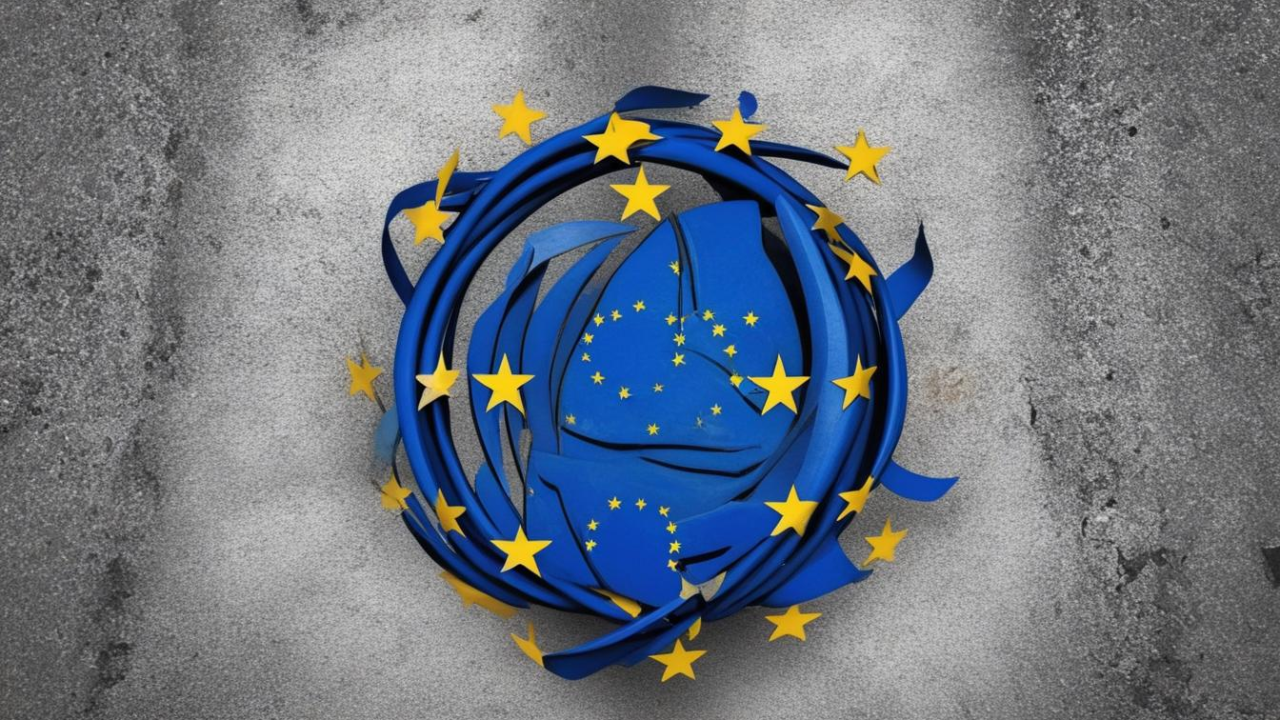
President Trump’s AI Action Plan: How the EU Lost the Battle for Global Standards
The collision between America’s AI Action Plan and the European Union’s AI Act represents more than regulatory divergence – it exposes the fundamental failure of Europe’s strategy to impose global technology standards through regulatory overreach. The EU’s ambitious gamble on creating a “Brussels Effect” for AI governance has backfired spectacularly, leaving European companies trapped in a shrinking, over-regulated market while global AI development accelerates beyond their reach.
Why Europe’s Bet on the “Brussels Effect” Failed Against American AI Pragmatism
By Robert Nogacki, Managing Partner, Skarbiec Law Firm Group
This isn’t a story of American regulatory nationalism versus European cooperation. It’s the inevitable result of Europe’s strategic miscalculation: believing that regulatory complexity could substitute for technological leadership, and that global companies would sacrifice competitiveness to satisfy Brussels’ bureaucratic preferences. The market has delivered its verdict, and it’s devastating for European AI ambitions.
The Brussels Effect Mythology: When Regulation Becomes Economic Suicide
The EU AI Act was designed as the ultimate expression of the “Brussels Effect” – the theory that European regulations become global standards because companies prefer single compliance frameworks to market fragmentation. This strategy worked brilliantly for GDPR in data protection, making Brussels the de facto global privacy regulator despite Europe’s declining economic weight.
But AI is not data protection. While GDPR regulated existing business practices, the AI Act attempts to shape emerging technologies through prescriptive rules that favor European political preferences over technological efficiency. The Act’s countless implementing regulations create compliance costs that scale with system capability – essentially penalizing AI advancement in favor of bureaucratic comfort.
Europe’s regulators convinced themselves that global AI companies would accept these constraints to access European markets. This fundamental misunderstanding of technological economics has proven catastrophic. Unlike consumer services that must serve local markets regardless of regulatory burden, AI development is globally mobile and intensely competitive. When Brussels made European compliance expensive and technically constraining, the market simply routed around Europe.
The numbers tell the story of regulatory failure. The Brussels Effect has become the Brussels Exodus.
The Technical Reality: Why Nobody Builds for Brussels First
The AI Act’s requirements reveal a fundamental misunderstanding of how AI systems actually work. Mandate for bias detection systems that explicitly account for protected characteristics creates technical debt that scales exponentially with system capability. These requirements aren’t just bureaucratic overhead – they fundamentally constrain system architecture in ways that reduce performance and increase costs.
Real-world AI development prioritizes computational efficiency, scalability, and performance optimization. The EU’s bias detection requirements force developers to sacrifice all three in favor of explainability systems that satisfy regulatory auditors even if they provide minimal user value. Companies building cutting-edge AI systems cannot afford these performance penalties when competing globally.
America’s AI Action Plan recognizes this reality by prioritizing performance over process. The plan’s emphasis on “objective” systems that maximize capability without regulatory constraint reflects how leading AI companies actually want to build products. While EU regulators demand expensive bias auditing systems, American procurement focuses on results – which is why global AI leaders are enthusiastically embracing U.S. standards while treating EU compliance as a reluctant afterthought.
The technical incompatibility between American and European approaches isn’t accidental – it’s the inevitable result of different priorities. America prioritizes AI capability; Europe prioritizes AI compliance. In a globally competitive technology race, capability wins every time.
Economic Mathematics: The Death Spiral of European AI
Europe’s regulatory approach creates what economists call a “death spiral” – compliance costs that increase faster than market growth, driving investment elsewhere and reducing the economic base needed to support continued development. The AI Act accelerates this process by making European AI development systematically less competitive than alternatives.
Consider the compliance burden for a foundation model company. EU requirements include algorithmic auditing, bias testing, explainability systems, conformity assessments, and ongoing monitoring – easily adding 20-30% to development costs before considering the performance penalties of required architectural changes. These costs scale with system capability, meaning Europe’s most innovative AI companies face the highest regulatory penalties.
Meanwhile, American companies operating under the Action Plan’s streamlined approach can deploy the same resources for actual capability development. The competitive advantage compounds over development cycles, creating an insurmountable gap between American AI capability and European AI compliance.
The market response has been predictable and devastating for European AI ambitions. Leading European AI companies like Mistral now develop primarily for global markets, treating EU compliance as a localization afterthought. European venture capital increasingly funds companies incorporated outside EU jurisdiction. Even European corporations prefer American AI systems despite regulatory preferences for local alternatives.
Europe’s AI Act hasn’t created global standards – it’s created a European AI ghetto where over-regulated local companies compete for a shrinking market while global leaders focus on more attractive opportunities elsewhere.
The Innovation Penalty: Why Europe Can’t Compete
The AI Act’s impact on innovation reveals the fundamental flaw in Europe’s regulatory strategy: believing that process improvements can substitute for technological leadership. The Act’s emphasis on explainability, bias mitigation, and algorithmic auditing addresses real concerns, but at costs that make European AI systematically less capable than global alternatives.
Innovation in AI requires rapid experimentation, massive computational resources, and tolerance for controlled risk-taking. The EU’s regulatory approach prohibits all three by requiring extensive documentation, pre-deployment testing, and risk mitigation systems that favor incremental improvements over breakthrough capabilities.
American AI development under the Action Plan embraces controlled risk-taking in pursuit of capability leadership. Companies can deploy experimental systems, iterate rapidly based on performance data, and scale successful approaches without regulatory gatekeeping. This approach occasionally produces failures, but also enables the breakthrough capabilities that define AI leadership.
European companies, constrained by the AI Act’s risk-averse requirements, cannot match this innovation pace. By the time European systems complete bias auditing and algorithmic testing, American competitors have deployed superior alternatives and captured global market share. The regulatory lag creates a permanent competitive disadvantage that compounds over innovation cycles.
The result is visible in AI capability benchmarks where American systems consistently outperform European alternatives by substantial margins. This isn’t because European engineers are less capable – it’s because European regulatory constraints prevent them from building the systems their skills could create.
Global Market Dynamics: Nobody Follows Brussels Anymore
The most damaging aspect of Europe’s AI regulatory strategy is its complete failure to create global adoption. Unlike GDPR, which established privacy standards that other jurisdictions gradually adopted, the AI Act has become a cautionary tale of regulatory overreach that other nations actively avoid.
Countries observing the U.S.-EU divergence consistently choose American approaches over European alternatives. The Action Plan’s emphasis on capability, performance, and competitive advantage resonates with nations seeking technological advancement, while the AI Act’s focus on process, compliance, and risk mitigation appeals primarily to regulatory bureaucrats.
Even traditional European allies prefer American AI approaches when given clear choices. The UK’s post-Brexit AI strategy explicitly rejects EU-style prescriptive regulation in favor of American-influenced principles-based approaches. Canada, Australia, and Japan increasingly align their AI policies with American standards rather than European requirements.
This global rejection of European AI governance reflects a fundamental shift in technological diplomacy. Nations no longer automatically defer to European regulatory preferences when American alternatives offer clearer paths to technological advancement and economic growth. The Brussels Effect worked when Europe represented the world’s largest consumer market; it fails when Europe represents a declining economic region with expensive regulatory compliance requirements.
The irony is that Europe’s attempt to lead global AI governance through regulatory assertion has relegated European AI to global irrelevance. By making European compliance expensive and technically constraining, the AI Act ensured that global AI development would occur elsewhere – exactly the opposite of Brussels’ intended effect.
The Chinese Opportunity: Benefiting from European Self-Sabotage
Perhaps the most strategic damage from Europe’s regulatory approach is the opportunity it creates for Chinese AI advancement. While European companies exhaust resources on compliance overhead and American companies focus on capability development, Chinese firms can selectively adopt whichever approach serves specific market opportunities.
Chinese AI companies already demonstrate sophisticated regulatory arbitrage, maintaining separate systems for domestic social credit requirements and international commercial applications. The U.S.-EU regulatory split legitimizes this fragmented approach while creating market opportunities for Chinese firms offering unified global deployment without ideological constraints.
More significantly, European regulatory complexity creates opportunities for Chinese technological leapfrogging. While European AI companies focus on bias auditing and explainability requirements, Chinese competitors can concentrate resources on fundamental capability advancement. The compliance overhead that constrains European innovation becomes a competitive advantage for Chinese development.
Nations frustrated with both American and European regulatory approaches increasingly consider Chinese alternatives that promise technological advancement without ideological complications. Europe’s regulatory overreach, combined with America’s ideological requirements, creates market space for Chinese systems that prioritize capability over compliance or political correctness.
The Failure of Regulatory Diplomacy: Brussels vs. Reality
Europe’s fundamental strategic error was believing that regulatory preferences could substitute for technological leadership in global standard-setting. The AI Act assumed that global companies would sacrifice competitive advantage to satisfy European political priorities – a miscalculation that reflects Brussels’ disconnect from technological reality.
Successful technology standards emerge from technical excellence and market adoption, not regulatory mandates. American internet protocols became global standards through superior performance, not government requirements. Chinese manufacturing standards achieve global adoption through cost advantages, not regulatory assertion. European AI standards fail because they prioritize process over performance in a field where performance determines everything.
The Action Plan’s approach recognizes this fundamental truth by focusing on capability development rather than compliance management. While Europe demands expensive bias auditing systems, America funds research into AI capability advancement. While Europe requires algorithmic explainability, America prioritizes algorithmic performance. The market responds predictably by embracing approaches that maximize capability over those that maximize compliance.
Europe’s regulatory diplomacy has failed because it fundamentally misunderstood the relationship between regulation and innovation in emerging technologies. Regulation can shape mature industries where technical approaches are established, but it cannot direct technological development in fields where capability advancement determines market success.
Strategic Implications: The Post-Brussels World
The failure of Europe’s AI regulatory strategy marks a broader shift in global technology governance away from Brussels-led standard-setting toward market-driven approaches that prioritize capability over compliance. This transition has profound implications for international cooperation and competitive dynamics.
Nations seeking technological advancement increasingly reject European-style prescriptive regulation in favor of American-influenced performance-based approaches. The traditional European model of detailed regulatory frameworks that anticipate all possible outcomes gives way to adaptive approaches that respond to technological development rather than attempting to direct it.
By betting that global AI development would accommodate European bureaucratic preferences, Brussels created a regulatory framework that systematically disadvantages European AI advancement while providing no compensating benefits.
The “Brussels Effect” failed for AI because Europe fundamentally misunderstood the relationship between regulation and innovation in emerging technologies. While GDPR succeeded by regulating existing practices, the AI Act attempted to shape technological development through prescriptive requirements that prioritize political preferences over technical performance.
The Brussels Effect is dead; long live technological reality.

Founder and Managing Partner of Skarbiec Law Firm, recognized by Dziennik Gazeta Prawna as one of the best tax advisory firms in Poland (2023, 2024). Legal advisor with 19 years of experience, serving Forbes-listed entrepreneurs and innovative start-ups. One of the most frequently quoted experts on commercial and tax law in the Polish media, regularly publishing in Rzeczpospolita, Gazeta Wyborcza, and Dziennik Gazeta Prawna. Author of the publication “AI Decoding Satoshi Nakamoto. Artificial Intelligence on the Trail of Bitcoin’s Creator” and co-author of the award-winning book “Bezpieczeństwo współczesnej firmy” (Security of a Modern Company). LinkedIn profile: 18 500 followers, 4 million views per year. Awards: 4-time winner of the European Medal, Golden Statuette of the Polish Business Leader, title of “International Tax Planning Law Firm of the Year in Poland.” He specializes in strategic legal consulting, tax planning, and crisis management for business.



